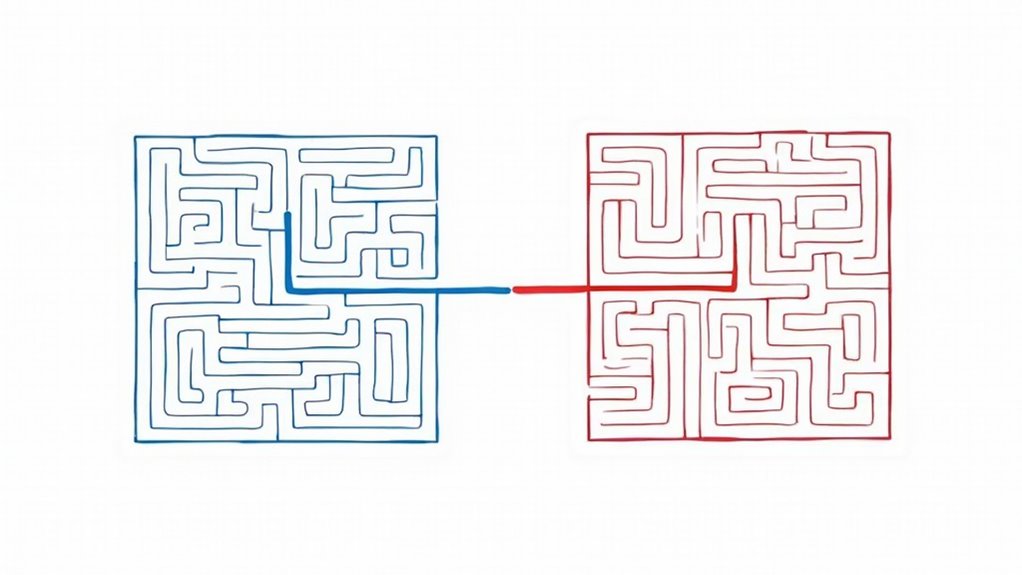Overfitting happens when machine learning models turn into overachieving students who can’t handle real life. These digital perfectionists memorize their training data like it’s gospel, including all the irrelevant noise and outliers. Sure, they ace their practice tests with flying colors, but throw them into the real world? Total meltdown. It’s like a GPS that only knows one route – useless when the road changes. The path to preventing this technological tunnel vision involves some clever tricks.
While machine learning models can work wonders with data, they sometimes try a bit too hard to be perfect. It’s like that overachieving student who memorizes every single detail but can’t apply the knowledge in real life. That’s overfitting – when a model becomes too fixated on its training data, learning not just the important patterns but also all the random noise and outliers. The result? A model that aces its training tests but falls flat on its face when faced with new data.
Think of it as a machine learning version of stage fright. The model performs brilliantly in rehearsal but chokes during the actual performance. This happens for several reasons. Sometimes there’s just not enough training data to work with. Other times, the data is messy and full of irrelevant information. Or maybe the model is just too complex for its own good – like using a supercomputer to calculate 2+2. A reliable way to detect this issue is by watching for diverging loss rates between training and validation data. The model often shows high variance while struggling to generalize effectively.
Models that ace training but fail in reality are like actors who nail every rehearsal but freeze on opening night.
The effects of overfitting are no joke. When these models hit the real world, they fail spectacularly. They’re like a GPS that only knows one route and completely freezes when encountering road construction. Business decisions based on overfitted models can lead to costly mistakes, and the worst part is that these models often look perfect on paper.
Fortunately, data scientists have developed ways to spot and prevent this problem. Cross-validation is like giving the model multiple pop quizzes instead of one big exam. If it’s doing suspiciously well on practice tests but bombing the real ones, that’s a red flag.
Prevention techniques include regularization (putting the model on a complexity diet), early stopping (knowing when to quit while you’re ahead), and data augmentation (giving the model more diverse examples to learn from).
The key is finding the sweet spot between a model that learns too much (overfitting) and one that learns too little (underfitting). It’s a delicate balance – like teaching a computer to be smart but not too smart for its own good.









